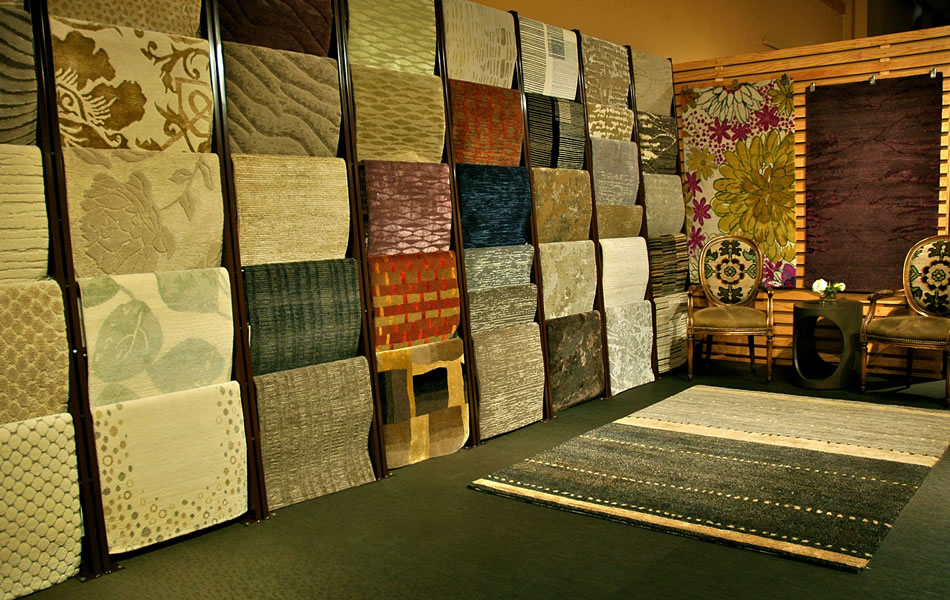Our Blog
Please feel free to post a question or just join the conversation.
Carpets Are Created Differently

Every carpet is created a little differently. There is a lot more to carpet differences than price. The fibers used, colors or dye process used as well as the weave of the rug itself. Various fibers and how they are used in carpet dictates how easy the carpet will be to clean, how long it will last, and retain its appearance, texture, and color.
Professional carpet cleaners must not only know the fiber content and the characteristics of the carpet they clean, but they must also know the structural support of the rug and the effects of different cleaning agents, solvents, and levels of moisture applied to a carpet to achieve the best possible outcome when cleaning a carpet without causing other issues. Each fiber has its "pros and cons." Most people often purchase a carpet on impulse. Their decisions are usually based on color, with texture and style following close behind.
There are two main groups of rug fibers, natural and synthetic. More popular synthetic fibers include nylon, polyester, and olefin. While natural fibers include wool, cotton, linen, and silk as popular fibers. From these the two most popular are nylon and wool carpets, so I will focus my discussion mainly on these two fibers. When you need new carpeting, comparing nylon and wool carpets can help you make an informed decision. Wool carpet is often considered the premier carpet. Its natural fibers make it extremely strong and durable, so wool carpets typically keep their appearance longer than synthetics. Wool carpets need to be protected from direct sunlight; ultraviolet rays can cause gradual fiber degradation. In addition, wool is a flame retardant. However, the hefty price tag of wool carpets keeps them out of reach for many consumers; they can cost up to twice as much as nylon carpets. Nylon is used in about 65 percent of the carpets sold in the United States, according to the Carpet Buyers Handbook. Nylon carpets are considered the most durable of any synthetic carpet; they are also the most expensive of the synthetics. Special dyes can make nylon carpets resistant to sun damage from UV rays.
Because wool is porous when wool carpets get wet, they are susceptible to mold and mildew growth. This may impact your decision on using wool carpets in an environment such as a basement that may be damp. Unlike their wool counterparts, nylon fibers are nonporous and tend to be mold and mildew-resistant. Wool carpets are known for their long-lasting resiliency. However, wool fibers can wear down when subjected to heavy traffic. I have particularly noticed wool carpets used on stairs, where the edges will wear very quickly. Nylon carpets are typically used for residential and commercial floors. The resiliency of a nylon carpet is determined by its construction, with assorted varieties available to accommodate average, heavy, or extremely active traffic areas. Nylon carpets can also be very soft and comfortable.
Quite often today's higher-end wool carpets are made with blends of silk, viscose, or linen used in them to highlight a particular design. These rugs are usually very beautiful but some degree of caution should be used when selecting these if prone to heavy traffic patterns. The added fibers may not wear as well. Viscose, which is an imitation of silk will not hold up well at all. The silk and linen are more expensive alternatives and will not wear as well as the wool fibers but will far outlast viscose.
When it comes to cleaning these more elaborate rugs, I find very few carpet cleaning technicians have been educated or have experience in dealing with these higher-end rugs. The certifications offered in the carpet cleaning industry seem to cover primary synthetic fibers when teaching these courses as well as the products used in cleaning. It is only with years of studying chemistry, fibers, dyes, and actual hands-on experience under the guidance of someone with years of experience that carpet cleaning technicians become proficient and skilled in the cleaning of these rugs. With over 50 years of carpet cleaning experience Alec's Carpet & Upholstery Cleaning LLC has specialized in the cleaning of not just your everyday carpets but in your finest Orientals or custom-made rugs in the greater Boston area within the 495 beltway and all of Cape Cod.
note_stackRelated Posts
- Boston Carpet Cleaning - Carpet Cleaning Jan 31
- How Often Should I Clean My Carpets - Carpet Cleaning Feb 19
- Can I Clean My Area Rugs In My Home ? - Carpet Cleaning Jan 29
- Salt Stains on a Rug - Carpet Cleaning Nov 17
- What is the best way to clean carpets - Carpet Cleaning Nov 12
- Odors in Carpets - Carpet Cleaning Oct 7
- Carpet Cleaning Boston - Carpet Cleaning May 2
- Winter Carpet Cleaning - Carpet Cleaning Jan 22
- All About Dust Mites - Carpet Cleaning Jan 15
- Best Boston Carpet Cleaner - Carpet Cleaning Dec 21
- What’s The Best Way To Clean An Oriental Rug ? - Carpet Cleaning Dec 14
- Got black edges along your carpet? - Carpet Cleaning Mar 10
Author's recent posts
- Towns That We provide Service To Feb 20
- Wearing Shoes in Your Home Aug 1
- Restoring Protected Leather May 28
Blog Categories
-
 Spot Cleaning (13)
Spot Cleaning (13)
-
 Carpet Cleaning (13)
Carpet Cleaning (13)
-
 About Rugs (5)
About Rugs (5)
-
 Upholstery Cleaning (3)
Upholstery Cleaning (3)
-
 Fabric Protection (2)
Fabric Protection (2)
-
 About Carpets (2)
About Carpets (2)
-
 Leather Upholstery (2)
Leather Upholstery (2)
-
 Fabrics (1)
Fabrics (1)
-
 Stains on Carpets (1)
Stains on Carpets (1)
-
 Discussions on Carpet & Upholstery (1)
Discussions on Carpet & Upholstery (1)
-
 News (1)
News (1)
